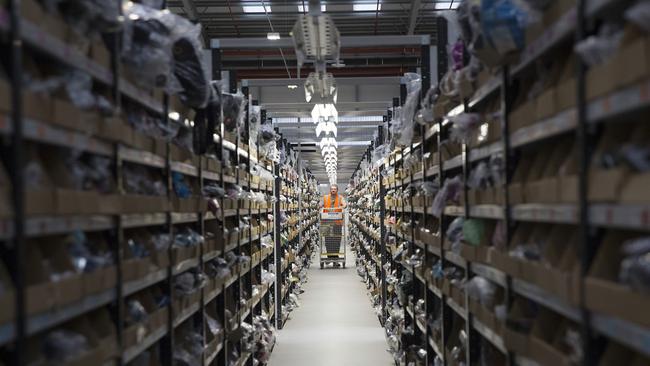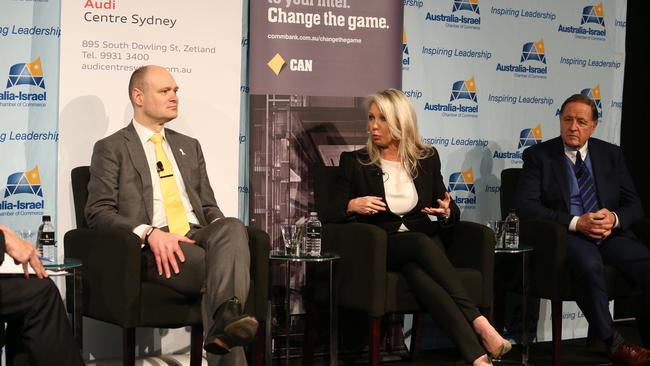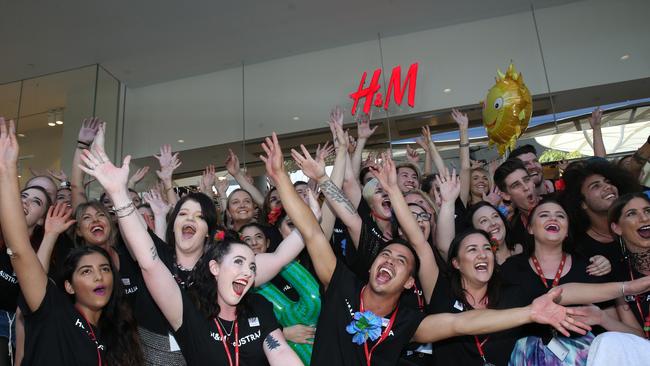Amazon coming like a ‘tsunami’ for Aussie retailers but faces same struggles as Zara, H&M
RETAIL bosses have a sense of doom as the online goliath begins its march on Australia. But will it survive here anyway?

AMAZON is coming “like a tsunami”, retail industry bosses have warned.
But the US e-commerce giant may face similar struggles as other overseas players such as H&M and Zara if it attempts to impose itself on the market, The Good Guys CEO Michael Ford says.
Speaking at the Australia-Israel Chamber of Commerce Retail Lunch on Wednesday, Mr Ford and Myer chief executive Richard Umbers discussed the dual “tsunamis” of online retail and millennial shoppers, who by 2020 will account for 30 per cent of all discretionary spending.
“I think Amazon is coming like a tsunami,” Mr Ford said. “It is [a threat] we respect enormously and I guess everyone in the game talks about it every day.
“But it’s had problems along the way. They struggle in Canada because of the tyranny of distance, Australia is a similar-sized country and logistics is quite challenging in this environment, so it will be interesting to see how that evolves.”
In the US, a survey conducted by parcel company UPS has revealed that for the first time, US consumers bought more purchases online than in-store, The Australian reports.
According to the survey, only 20 per cent said their purchases were made conventionally in stores, with 42 per cent searching and buying completely online, and the rest using combined online and bricks-and-mortar searching and buying.

Mr Umbers said it was important to note that domestic bricks-and-mortar retailers getting into online with so called “bricks-and-clicks” strategies were experiencing the highest growth rates in Australia right now.
“That is because of the home team advantage,” he said. “Being able to leverage brands, established customer connections, your existing supply chains, customer information, the ability to return products, as well as all of these other features like click-and-collect, it’s a very powerful proposition.
“Amazon are an amazing business and I’m fascinated to watch what they do, and I think we can all learn an enormous amount from them. But I don’t think domestic bricks-and-mortar retail is down and out yet. I think there’s still a whole evolution to unfold.”
Despite e-commerce having been around for the better part of 16 years, it still only makes up seven per cent of total worldwide sales, Mr Ford pointed out.

“What good retailers are realising now is they have these comfortable, happy distribution centres called stores,” he said. “So if you have a wonderful interface between your e-commerce structure and your stores, and the experience is seamless, you’ve got a phenomenal asset.”
He agreed that local knowledge was extremely important. “Other retailers here we know have struggled — Zara struggled, H&M struggled — it’s not easy going into markets with very high labour costs, very high rent, and cut it,” he said.
“They don’t know the local landlords, they don’t know where the local talent is, and some of these retailers make the mistake of coming in here and imposing, as did Masters, their assortments on the market and getting complete rejection.”
Instead of coming in with their brands and employing local merchants who “relate to the local consumer”, they “made the mistake of imposing themselves”, Mr Ford said.
Mr Umbers, pressed on whether he also “talks about Amazon every day”, said: “What we talk about every day is executing our own agenda and strategy, of which digital omnichannel is one of our four key strategic priorities. The investment we’re making in e-commerce digital is talked about all day, every day.”




